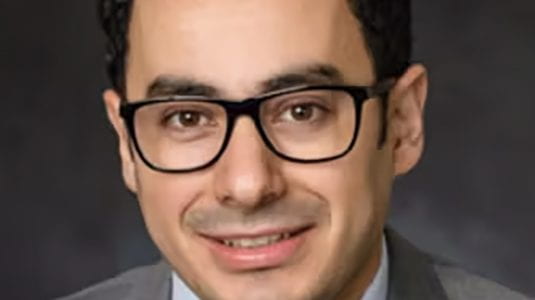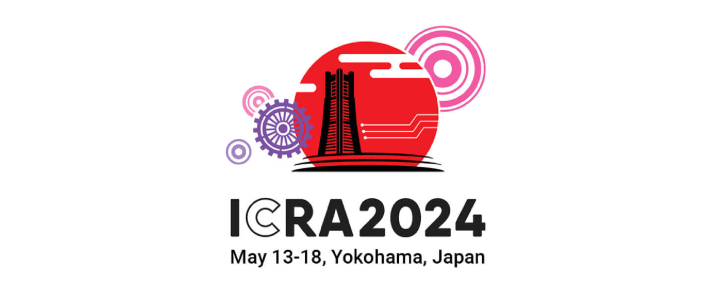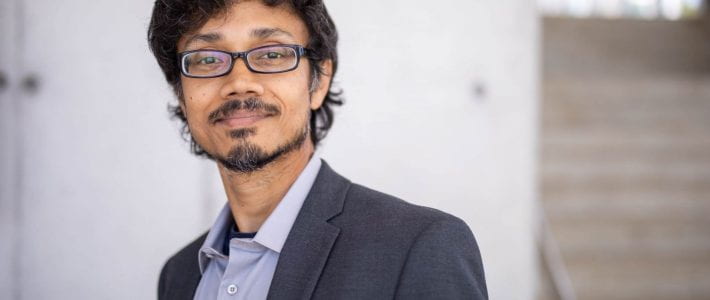Developing best practices for human-AI collaboration in engineering design



Lehigh AIRLab core faculty Prof. Cristian-Ioan Vasile, Ph.D. students Disha Kamale and Gustavo Andres Cardona Calderon are organizing a full-day workshop on May 17th, 2024 at IEEE International Conference on Robotics and Automation in Yokohama, Japan.
Cristian-Ioan Vasile, Lehigh University
Jonathan DeCastro, Toyota Research Institute
Xiao Li, Shanghai Jiao Tong University
Tichakorn (Nok) Wongpiromsarn, Iowa State University
Karen Leung, University of Washington
Disha Kamale, Lehigh University
Gustavo Andres Cardona Calderon, Lehigh University
https://sites.google.com/lehigh.edu/fmr-icra2024/home
The formal methods community has produced many successful results and tools in computer
science, and has initiated a steady effort in moving towards applications in robotics over the
past two decades. However, most robotics researchers and practitioners are unaware of or find
it difficult to adopt these methods due to: 1) high initial effort to use, and 2) disconnect between
the method and tool developers and the larger community. While initially methods were shown
in simple proof-of-concept scenarios, today, tools have matured to conform to the requirements
of robotics applications. These tools offer the logical reasoning necessary to automate planning
and control, provide apriori guarantees for bug-free achievement of tasks, provide unambiguous
specification languages, lay the foundation for formal verification of planning components as
well as their composition with perception components (e.g., machine learning), provide a
framework for explainable learning, and enable embedding of logical structure in learned
models. This workshop seeks to bring together the robotics and formal methods communities in
a hands-on event that will demystify the current state-of-the-art, bridge the knowledge-transfer
gap, and foster continued collaboration. We aim to encourage roboticists to adopt automated
synthesis and formal verification tools in their research, and direct the formal methods
community to the needs of robotics.
The speaker list includes: Prof. Kostas Bekris (Rutgers University), Prof. Calin Belta (UMD),
Prof. Chuchu Fan (MIT), Prof. Jie Fu (University of Florida), Prof. Yiannis Kantaros (Washington
University in St. Louis), Prof. Rahul Mangharam (University of Pennsylvania), Prof. Sanjit A.
Seshia (University of California, Berkeley).
Supported by the IEEE Robotics and Autonomous Systems Technical Committee for Verification
of Autonomous Systems.

With support from a nearly $500,000 Air Force Office of Scientific Research grant, researchers in Lehigh University’s P.C. Rossin College of Engineering and Applied Science are making strides in understanding and managing signal transmission dynamics in networks.
The interdisciplinary project is led by Subhrajit Bhattacharya, an assistant professor of mechanical engineering and mechanics, with Rick Blum, the Robert W. Wieseman Professor of Electrical and Computer Engineering, and focuses on developing theoretical foundations and algorithmic tools to control signal flow across networks.


The Defend The Republic Drone Competition will be hosted at Lehigh University from Nov. 13 – 17, 2023. For more information, please visit Defend the Repbulic.

Professor Nader Motee recently received a nearly $680,000 grant from the Office of Naval Research to develop a novel, multi-stage, perception-based control paradigm that will essentially help robots assess risk, and ultimately make autonomous systems safer and more efficient.

Lehigh ECE professor and underwater wireless communications expert Yahong Rosa Zheng leads NSF-funded team developing a novel Autonomous Observatory Node prototype that would transmit data from undersea sensors—without the costs and limitations of cables.